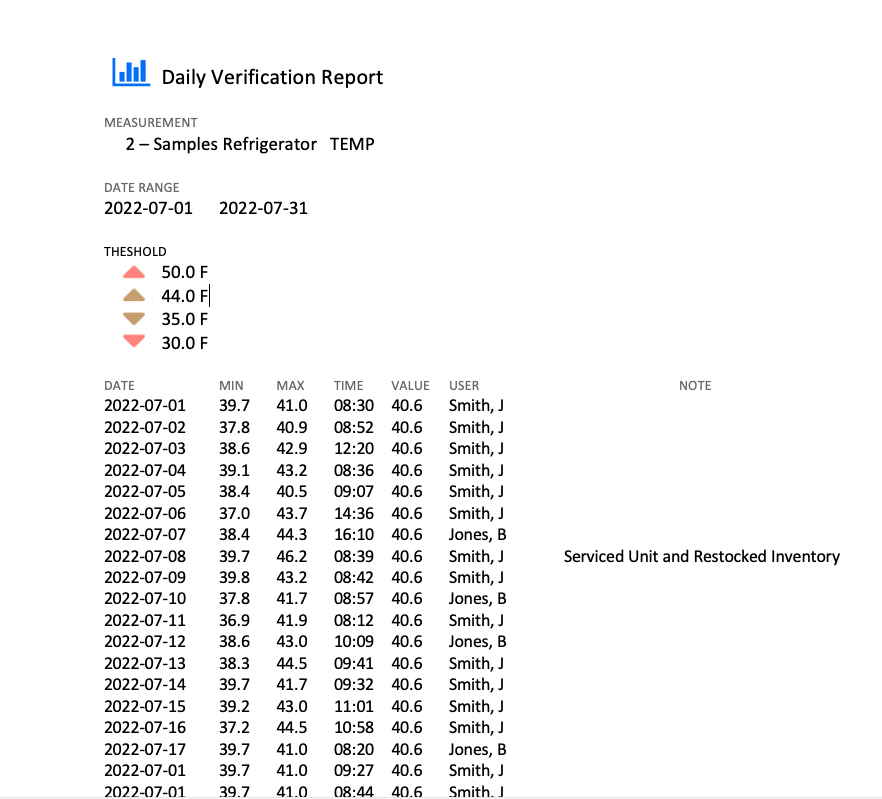A Lab temperature monitoring system are essential in any laboratory. By using these tools, you can save time and money. In particular, modern lab and pharmaceutical temperature monitoring tools are quick and easy to use, and they provide accurate results. Savings come in the form of saved time from automation and saved inventory from equipment monitoring. In this blog post, we’ll explore how these modern tools work and help your business.
What are the benefits of a lab temperature monitoring system?
Many lab and pharmaceutical temperature monitoring systems offer real-time data monitoring so you can quickly identify issues with your equipment and make changes if needed. Additionally, these tools allow you to set parameters such as alarm thresholds and temperature limits. This ensures that temperatures are kept within an acceptable range and allows you to take corrective action before damage or safety hazards occur.
In addition to real-time data monitoring, many lab and pharmaceutical temperature monitoring systems also allow for scheduled temperature logging. This allows you to track and analyze trends in temperatures over time and identify any potential issues before they become more serious. This can help you save money on repairs or replacement equipment, as well as prevent safety hazards from occurring.
Finally, many lab and pharmaceutical temperature monitoring systems also offer analytics capabilities. This allows you to analyze the data collected and identify areas of improvement or optimization. You can then use this information to make changes to your equipment or processes to ensure that optimal temperatures are maintained at all times.
Overall, modern lab and pharmaceutical temperature monitoring systems provide a number of benefits, from saving time and money to optimizing processes. With these tools, you can ensure that your laboratory temperatures stay safe and consistent for the best results.
What temperature logs and reports are required for medical labs, pharmacies, and blood banks?
In addition to protecting your inventory, many labs are subject to government program requirements to maintain daily temperature logs. For example, the Vaccines for Children (VFC) program administered by the CDC requires that staff record minimum and maximum temperature values at least once daily, preferably in the morning, and if an out-of-range temperature is observed, a troubleshooting record must be completed. The Clinical Laboratory Improvement Amendments (CLIA) program standard for clinical laboratories regulated by the Center for Medicare Services (CMS) requires that temperatures are logged every day with a digital signature from the authorized staff member.

By using a laboratory temperature monitoring system, you can easily keep track of your temperatures and ensure that you are in compliance with the required standards. Temperatures are automatically saved in the cloud with reports generated automatically to meet the requirements from appropriate government programs. This also helps to minimize manual data entry, which saves both time and money for your business, and doesn’t require you to put more menial tasks on your staff members.
How do lab temperature monitoring systems work?
Lab temperature monitoring systems use wireless sensors to monitor the temperature inside of medical refrigerators and freezers. Sensor data is transmitted to a gateway that relays the data to the internet. The temperature data is stored in the cloud, and users configure software to set thresholds and alarms. When the software reads temperatures out of range, you receive alerts. It is important that the sensors are NIST-traceable to ensure the accuracy and repeatability of their measurements. A calibration certificate is usually included with the sensor showing its calibration date. Most calibration certificates are valid for one or two years. In addition, a temperature buffer – such as a glycol-filled bottle – is also required to ensure that measurement values do not oscillate quickly when freezer doors are opened. Temperature buffers ensure the measured temperature is more representative of the temperature of the medicine, sample, or vaccine.
Lab temperature monitoring systems are becoming increasingly popular as businesses look for ways to save money, improve efficiency, and protect their inventory. With these modern tools, you can ensure that your lab temperatures remain safe and consistent while also reducing the amount of time spent managing data. Investing in a reliable laboratory temperature monitoring tool is a wise decision that will save your business money and help you remain compliant with any required standards.
